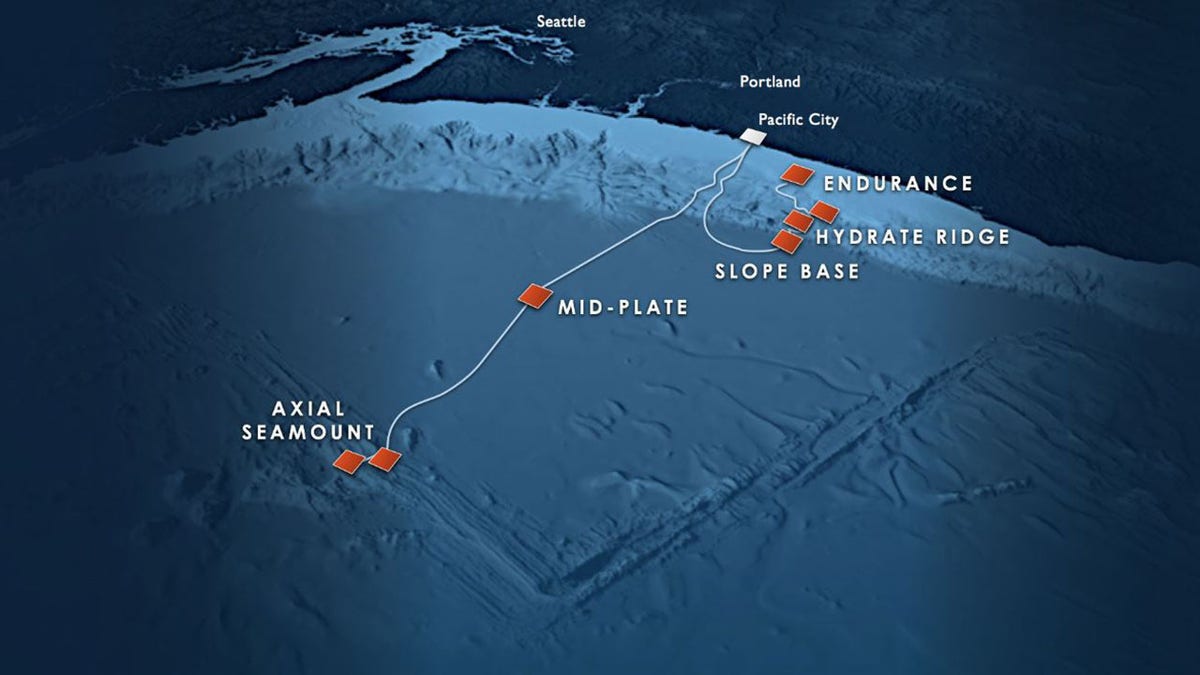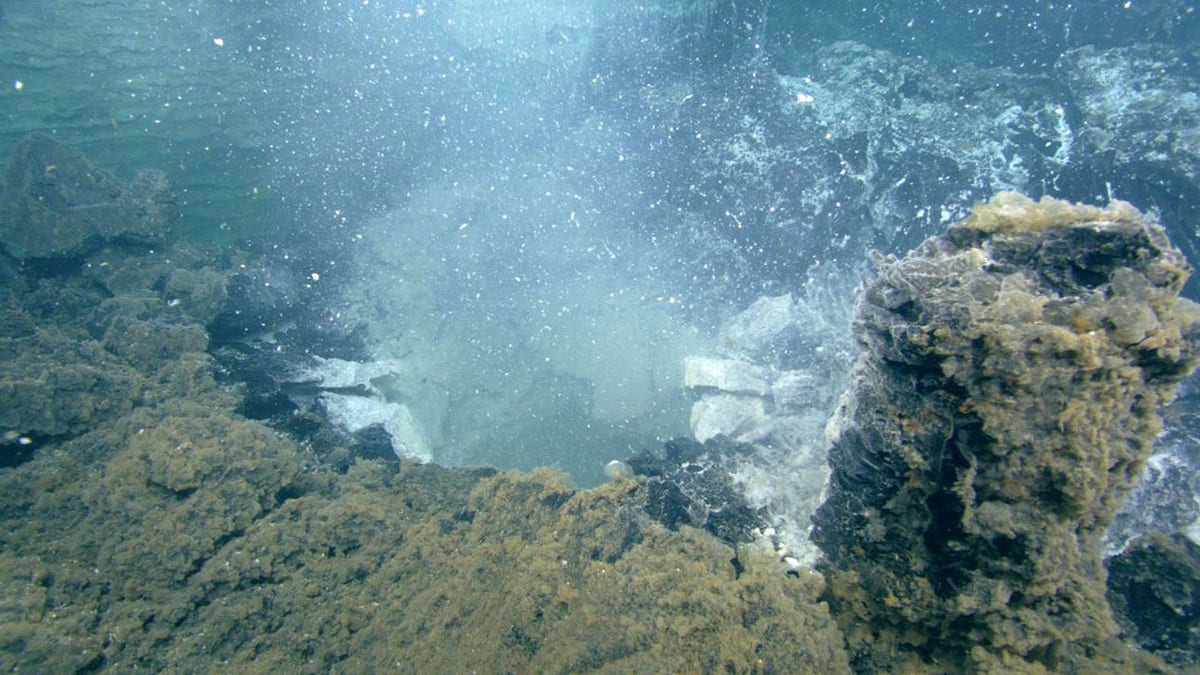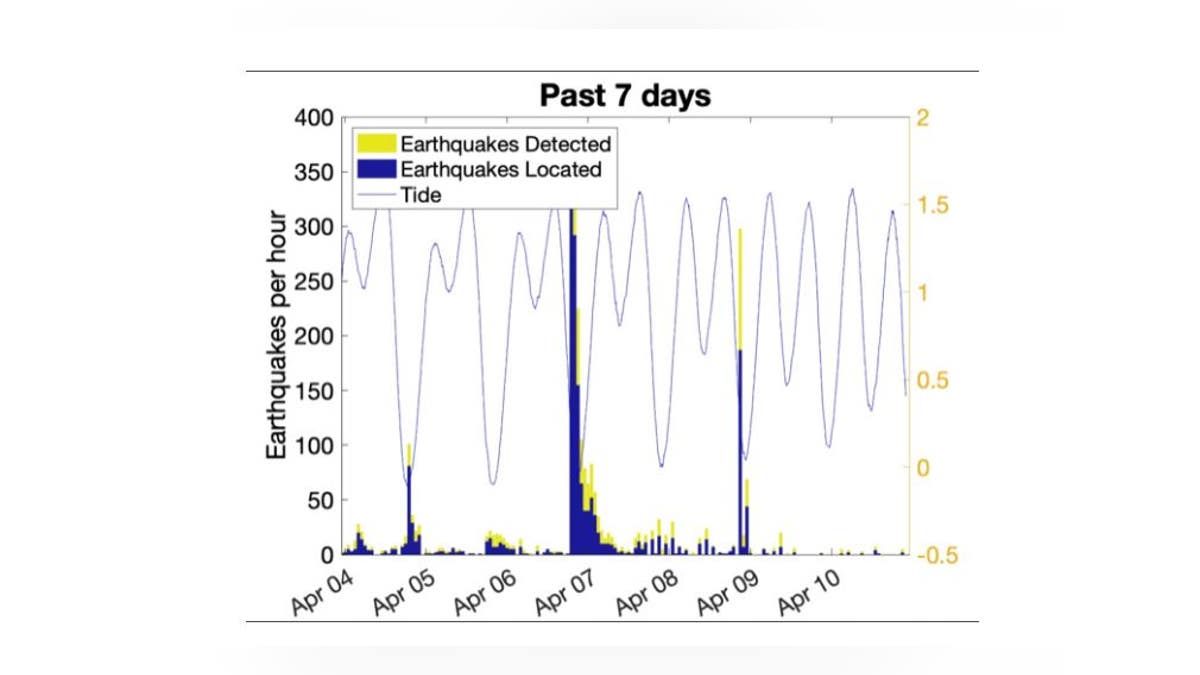Scientists say the Oregon coast may erupt the watering volcano under water.
The volcano, known as Axial Seamount, is more than 4,900 feet on the coast of Pacific and Oregon, but it shows signs that will soon erupt for the first time since 2015.
A volcano hot spot, a territorial in the area where melted material in the area of melting material in the territorial mantle has rose to the shell of hot plumbumies, was reported to be a April Blog at the University of Environmental College of Washington. As the care is above the top of the mantle, the hot spot is placed in a hot place, which results in the long volcanoes of volcanoes over time.
Video: Chaos in Bangkok, apartment building collapses, miss people

The region, from the Oregon coast, Oregon coast covers the entire Juan de fucan tectonic plate from the Sea of Axial Seamound 300 miles. (Ocean Surveillance Initiative through Washington University)
“Two-thirds of the earth’s surface were founded as a result of volcanic eruptions in the middle ocean ridges,” said Maya Tolstoy, Dean of Marine Geophysics and Environmental College of the University. “Axial Seamound is a direct result of these fundamental processes that continue to form our planet today.”
The eruption of scientists does not pose a threat.
“Axial Seamound is very deep and far from the shore to people in the land. A spray at Axial Seamound, a spray with seismic activity, so northwest is no need for any eruption in the north-west,” said no eruptions, “said no eruptions.”
There will be a sharp increase in the number of earthquakes around the first sign of the eruption in the volcano, which was reported.
Video: A water container of the building in Bangkok after the earthquake

Microbes and their waste materials, this “snowfall” flows to Axiel Seamount three months after the eruption in 2011. (OCEAN drawing meters initiative through the University of Washington)
“The volcano has already exceeded the inflation we have already observed in 2015, but the earthquake is still very low,” Deborah Kelley, UW Oceanography School and Director of the Regional Cable Massivism Prof. “We see about 200 to 300 earthquakes per day, we see about 1,000 earthquakes per day due to the tide. If we are correct in 2015, I will see more than 2,000 months before the eruption.”
Earthquakes, Magma moves towards the surface, will lead to post areas.

Earthquake activities in the axial seamount spikes in the low tide. (OCEAN drawing meters initiative through the University of Washington)
Click here to get FOX News app
“This period lasts about an hour, then the magma reaches the surface,” said William Wilcock, a professor at the UW Oceanography School. “Lava flow spread across Caldera and lava filled with north or south to 40 kilometers (about 25 miles).
“Seismic activity is less than in the next few days, but the eruption will last slowly over a month.”




